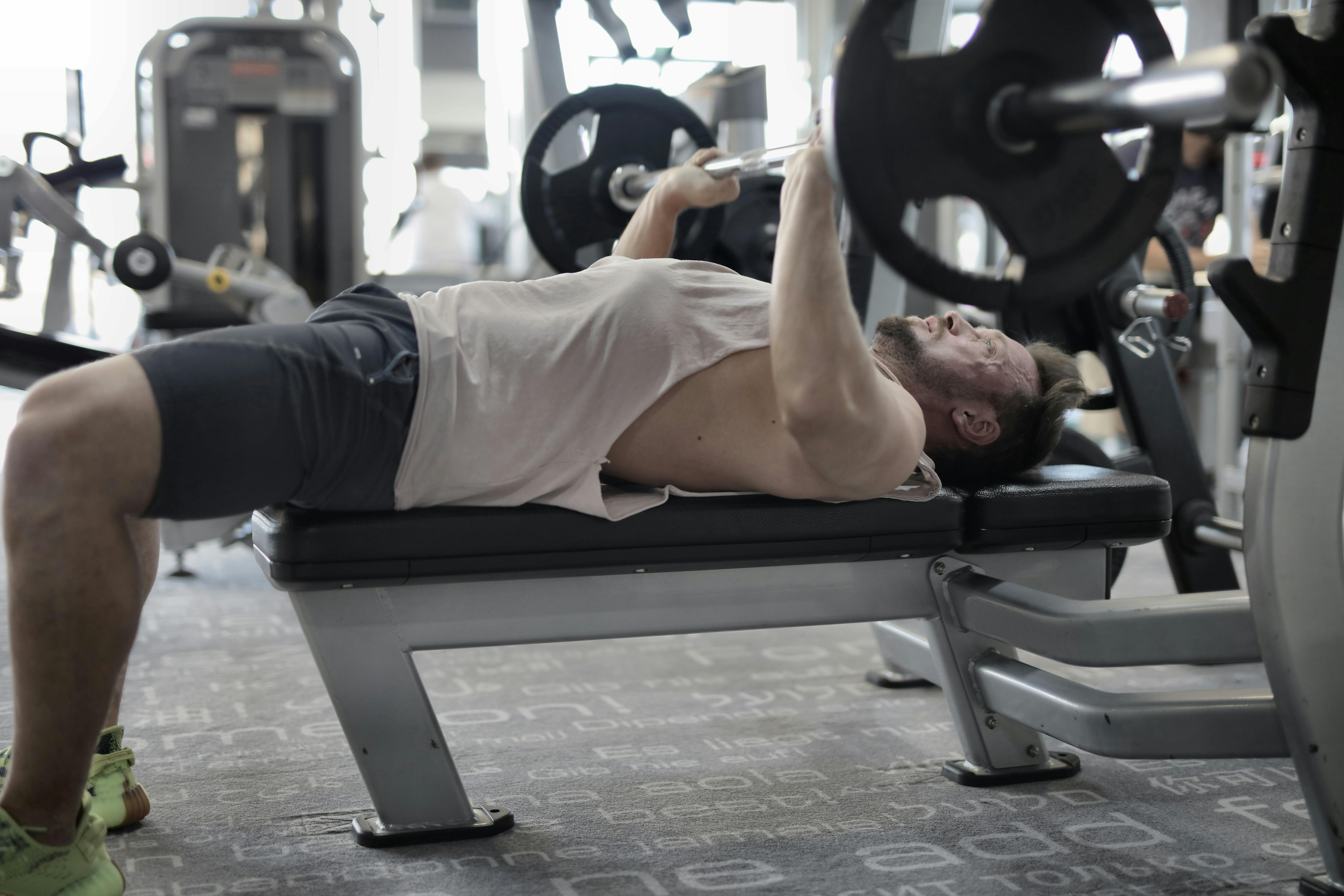How to Increase Bench Press Safely and Effectively
The bench press is one of the most iconic lifts in strength training, yet many lifters hit a frustrating plateau. Whether you’re new to the gym or a seasoned athlete, learning how to increase bench press power can dramatically boost your upper body strength. This guide will walk you through science-based strategies, from fundamentals to advanced techniques, helping you break barriers and reach new personal records.

Understanding the Fundamentals
Improving your bench press starts with understanding the key principles behind strength development. The bench press is a compound movement that engages the chest, shoulders, and triceps. It also relies heavily on technique, control, and neural efficiency. Knowing the “why” behind the lift lays the foundation for consistent progress.
Think of the bench press like a car engine—each muscle group and joint acts like a gear. If one component is out of sync, the whole system suffers. This section covers the mechanics you need to build a solid base.
1.1 Proper Bench Press Technique
A powerful bench press starts with proper form. Your back should be arched, feet planted firmly, and wrists stacked over elbows. According to a 2023 study by the Journal of Strength and Conditioning Research, poor technique can reduce output by over 20% and increase injury risk.
Real-world applications show that refining your setup and bar path can instantly add 10-15 lbs to your lift. Common misconceptions include flaring elbows excessively or pressing with an unstable base.
1.2 Muscle Activation and Balance
While the chest does most of the work, don’t underestimate the triceps and shoulders. Many lifters focus too much on the pecs and neglect the supportive muscles, leading to imbalances and stalled progress.
Elite lifters use accessory exercises like close-grip bench press and face pulls to maintain balanced development. This prevents injury and supports sustained strength gains.
Practical Implementation Guide
Now that you understand the principles, it’s time to apply them. Increasing your bench press requires strategic planning, consistent effort, and recovery. This section gives you a roadmap to follow, whether you’re lifting 95 lbs or 315 lbs. Set realistic expectations: with discipline, many athletes can add 20-40 lbs to their bench within 12 weeks.

2.1 Actionable Steps
- Establish a Baseline: Test your one-rep max (1RM) using a calculator or supervised lift to determine your current level.
- Use Progressive Overload: Increase the weight slightly each week—2.5 to 5 lbs—to challenge your muscles continuously.
- Track Workouts: Use a notebook or app to log sets, reps, rest times, and perceived exertion to monitor progress.
2.2 Overcoming Challenges
Many lifters encounter common obstacles like shoulder pain, plateauing, or lack of motivation. Here’s how to address them:
- Plateaus: Deload for one week, then resume with new rep ranges.
- Form Breakdown: Video yourself to identify weak points or hire a coach for feedback.
- Injury Risk: Warm up thoroughly and prioritize shoulder mobility drills.
Watch for signs like elbow flare, bar drifting, or uneven lockout. Expert tips include using pause reps to improve control and strengthening the rear delts to stabilize the bar path.
Advanced Applications
Once you’ve built a strong foundation, advanced techniques can help you push past intermediate gains. These methods are ideal for lifters with at least one year of consistent training or those stuck at a plateau for 6+ weeks. Knowing when to upgrade your approach can lead to dramatic strength increases.

3.1 Dynamic Effort Method
Used by elite powerlifters, this technique involves lifting submaximal loads at maximum speed to build explosive power. For example, 8 sets of 3 reps at 60% of your 1RM with short rests (45 seconds) can boost neural recruitment and bar speed.
Case studies show lifters adding 10-20 lbs to their bench within six weeks using this method, especially when combined with accommodating resistance like bands or chains.
3.2 Periodized Programming
Advanced lifters often follow periodized cycles—dividing training into phases like hypertrophy, strength, and peak weeks. This allows the nervous system to adapt and avoid burnout.
Ensure your bench program is compatible with your squat and deadlift schedules to avoid overtraining. Many lifters use full-body templates with bench-specific focus days for maximum effectiveness.
Future Outlook
The future of strength training is being shaped by wearable tech, AI-guided programs, and real-time biometric tracking. Smart benches and dynamic load feedback devices are already entering elite gyms.
In the next 3-5 years, expect personalized recovery plans, virtual coaching platforms, and biomechanical assessments to become more accessible. Start preparing by familiarizing yourself with velocity-based training tools and movement assessment apps.
Conclusion
To summarize, increasing your bench press comes down to mastering technique, applying smart programming, and pushing into advanced methods when ready. Key takeaways:
- Focus on technique and stability from the start
- Apply progressive overload consistently
- Adapt with advanced methods when plateaus hit
Ready to break your personal records? Start tracking your workouts today, refine your form, and commit to a structured plan. Your new PR is closer than you think.
Frequently Asked Questions
- Q: What muscles does the bench press target? Primarily the pectorals, triceps, and anterior deltoids. Supporting muscles include lats and core.
- Q: How do I get started with bench pressing? Begin with an empty bar to learn form, then gradually add weight under supervision.
- Q: How long does it take to increase bench press strength? With a proper plan, noticeable gains can be achieved in 6 to 12 weeks depending on training frequency and recovery.
- Q: Is bench press equipment expensive? A good setup ranges from $200 to $1,000 depending on barbell, bench, and rack quality.
- Q: Is dumbbell press as effective as barbell bench? Dumbbells offer greater range of motion and unilateral training, but barbells allow heavier loads for max strength.
- Q: Is the bench press hard to learn? With proper instruction, most people can master basic form within a few sessions. Mastery takes months of practice.
- Q: How does bench press apply to sports? It improves upper body power, essential for football, wrestling, and other contact or throwing sports.